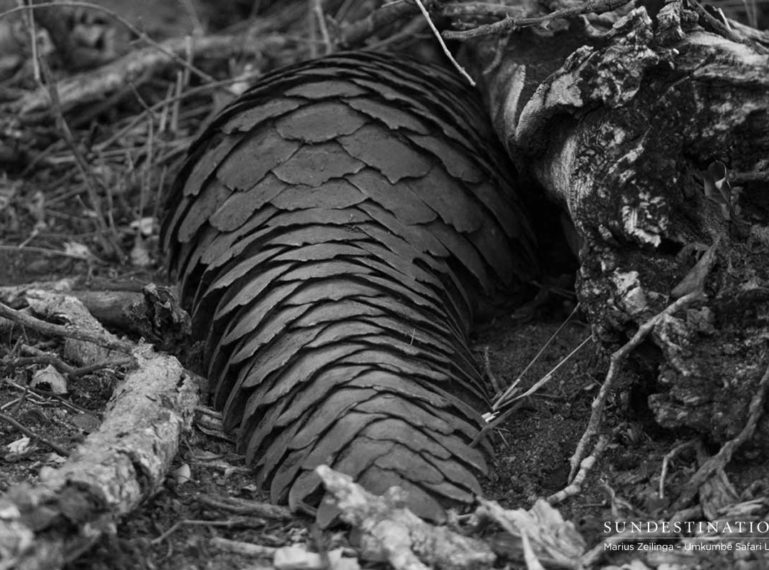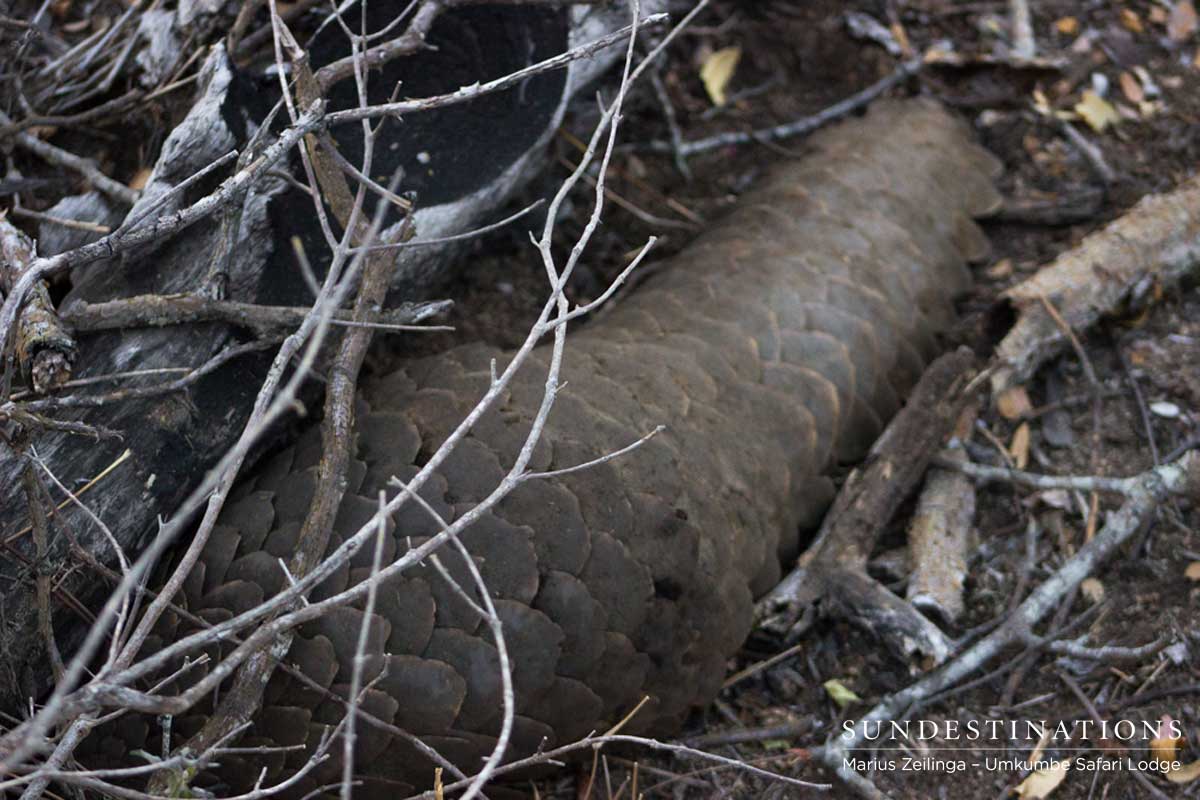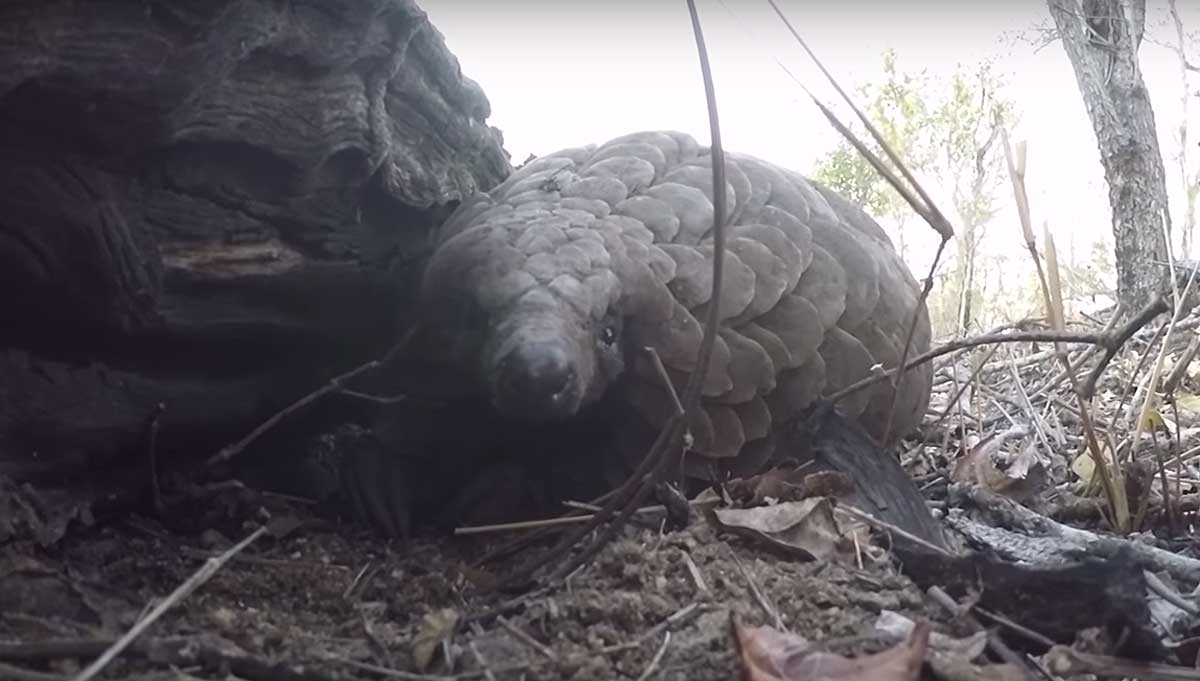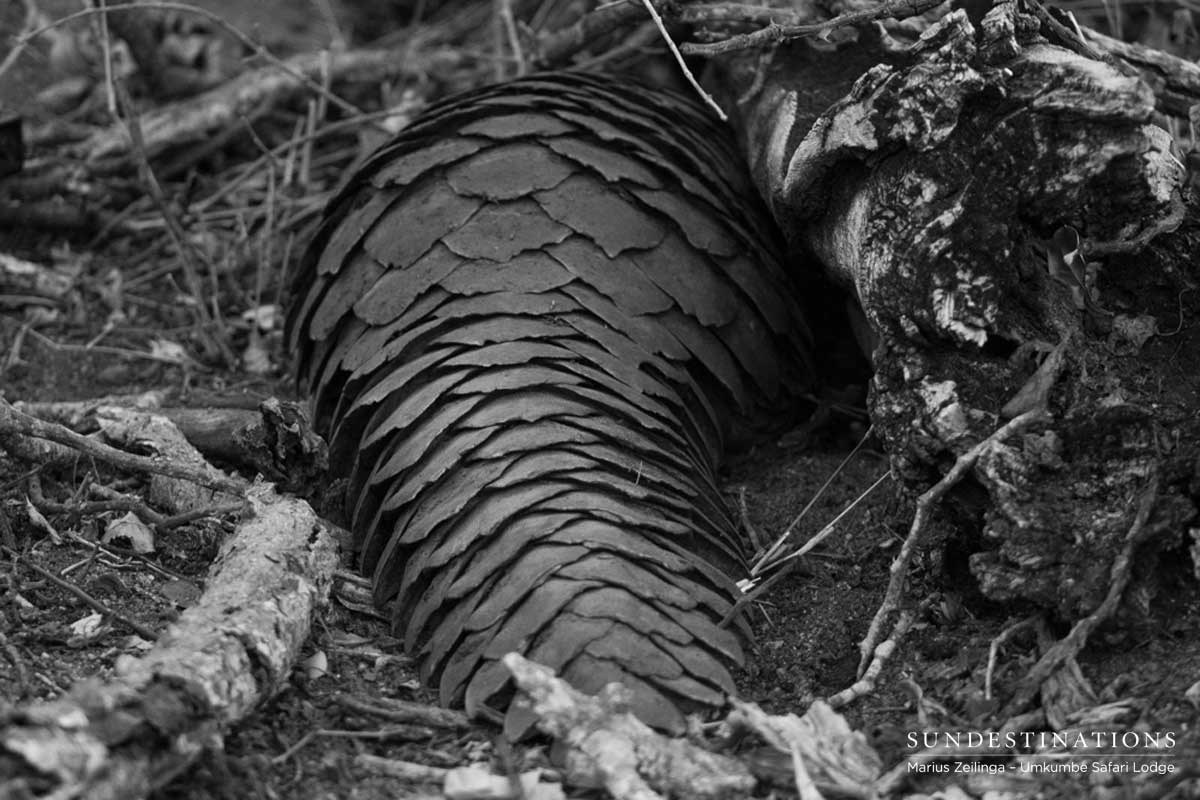
The pangolin is prehistoric looking creature covered in a scaly, protective armour and is rarely seen. Little is known about these notoriously shy mammals, but we do know they’re a protected species and sightings of them in the wild always need to be celebrated. It is estimated that over 100, 000 pangolins are captured on an annual basis for their scales and meat. Their scales are sold under the misguided belief that they cure acne and cancer. In Africa and Asia, there are 8 species of pangolin, all of which are endangered. These sensitive and shy “scaly anteaters” are found within the Kruger region and just recently guests at Umkumbe Safari Lodge in the Sabi Sand were treated to a once in a lifetime sighting of this curious creature.
When we do receive reports of pangolin sightings, it’s normally of them curled in the defensive ball position. Marius Zeilinga, one of the rangers from Umkumbe, managed to film the pangolin and get a close-up sighting of its small and adorable face!
If you’ve never heard of a pangolin or don’t know much about them, here are five interesting facts about these solitary nocturnal mammals:
1. Pangolins are quite defensive and often “play dead”. They do this by rolling up into a ball and if the need arises, they’ll lash out with their tail. The keratin like scales that cover their body are sharp and can slice through an enemy’s skin.
2. Another weapon used by the pangolin is to emit a noxious smelling gas, similar to that of a skunk’s. Pangolin’s don’t actually spray the liquid but rather emit the foul smelling acid which makes predators think twice about launching an attack.
3. When comes to diet, the pangolin feed on ants and other insects. They’re often found close to termite mounds, which is a great source of food. Their tongue extends the full length of its body and is coated with a sticky substance. All species of pangolin have large, curved claws used for pulling off tree bark, digging up termite nests and ripping up logs to extract their food.



Leave a Comment